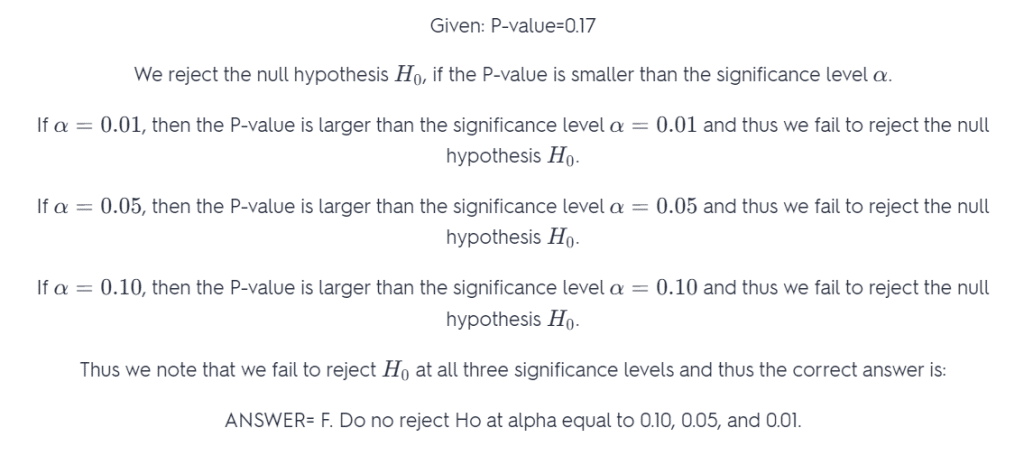The P-value is a measure of the probability that a hypothesis might have occurred by chance or not. Hence, a P-value of 0.13 means that the hypothesis has occurred by random chance. Therefore, we’ll fail to reject the null hypothesis.
The commonly used α – value is 0.05 ;
The P-value is then compared to the α – value.
If the p-value is lesser than the α – value, then we reject the Null hypothesis otherwise, we fail to reject the null hypothesis.
Therefore, since P-value > α – value, we fail to reject the null hypothesis.
Suppose you conduct a test, and your p-value=0.17. What can you conclude?
A. Reject Ho at alpha=0.05 but not at alpha =0.10
B. Reject Ho at alpha=0.05 but not at alpha =0.01
C. Reject Ho at alpha =0.10 but not at alpha=0.05
D. Reject Ho at alpha=0.01 but not at alpha=0.05
E. Reject Ho at alpha equal to 0.10, 0.05, and 0.01
F. Do not reject Ho at alpha equal to 0.10, 0.05, and 0.01
Answer
F. Do not reject Ho at alpha equal to 0.10, 0.05, and 0.01.




